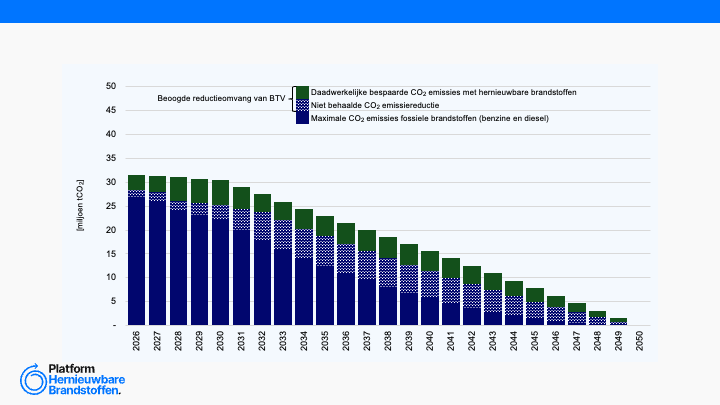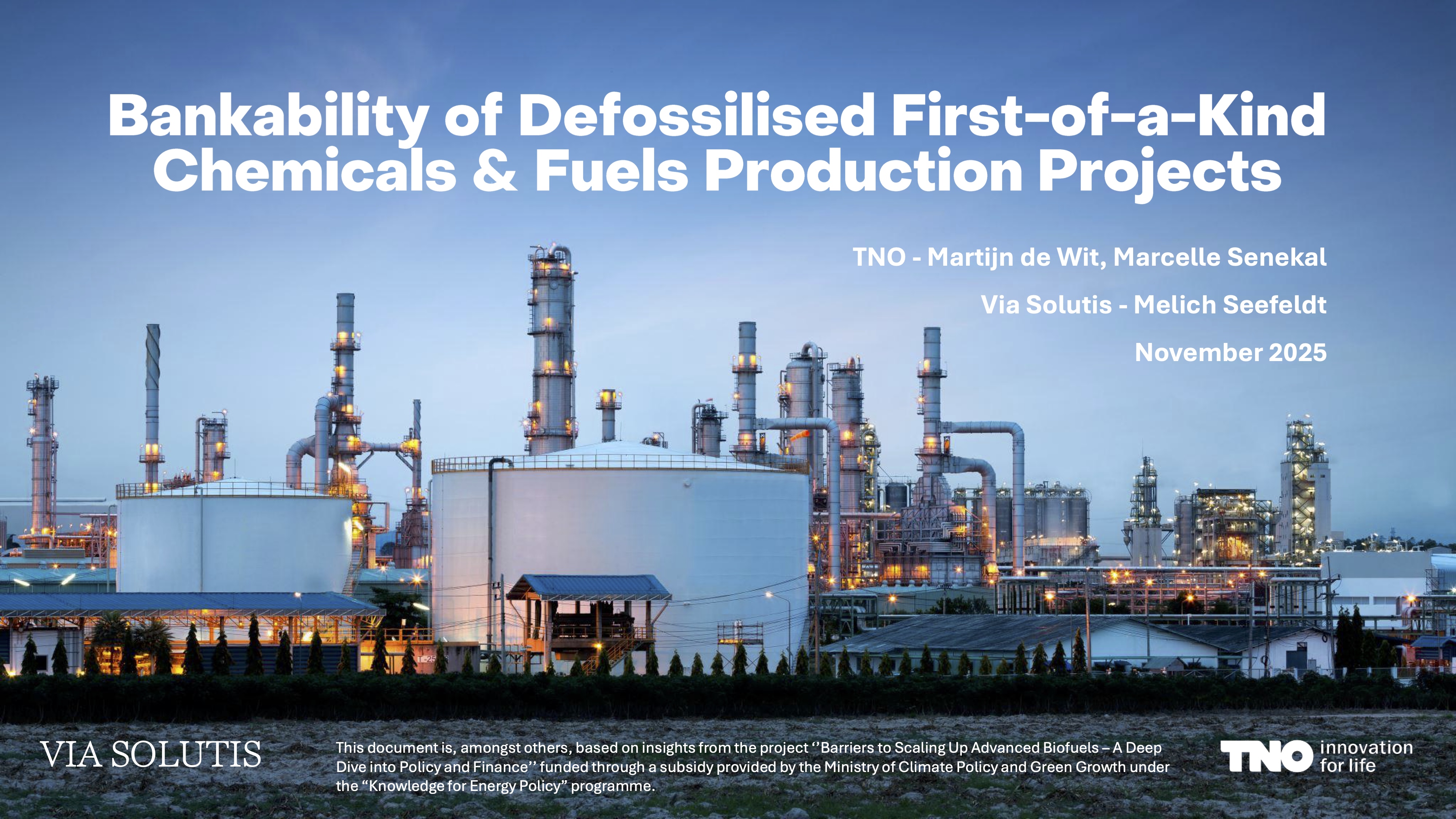Sustainable shipping: An explorative study into the use of biodiesel for coaster ships coming from Russia to the Benelux

This report by the Centre of Expertise Biobased Economy (CoE BBE) explores the adoption of biodiesel for maritime transport between Benelux and Russia. It is based on literature and 13 expert consultations in the fields of governance, oil distribution and emissions trading. The analysis begins with an overview of the current shipping (bio-)fuel market in the Netherlands. Then, environmental policy and regulations are described on a global, EU, and Dutch level. Subsequently, the environmental impact of certain fuels is further analysed in detail. After that, the study investigates technical, combustion and fuel supply-related implications of different fuels, as well as ship modifications to reduce the environmental impact. Finally, the study concludes with funding opportunities and consortium developments.
In the first chapter, insider's knowledge about the Dutch marine fuel and biofuel market is shared, such as a comparison of December 2019 to December 2020 prices of conventional fuel oils, and the "opt-in" experiences made with biofuels in the Dutch shipping sector. Moreover, the section briefly mentions bunkering behaviour of several market players in the Dutch shipping sector (i.e. Shell, Esso, Maersk and Goodfuels). Well-to-wheel CO2 emissions and flue gas emissions of biodiesels are also compared with conventional fuels. Note, however, that this report uses the word "biodiesel" for both fatty acid methyl ethers (FAME) and hydrogenated vegetable oils (HVO), i.e. for biofuels that can be used in a diesel engine. Conventionally, "biodiesel" refers to FAME only, whereas HVO would be referred to as renewable diesel.
The second chapter explains the regulatory environment set by the International Maritime Organization (IMO), the EU and the Netherlands. For the context of this study, the Emission Control Area (ECA) around the North and Baltic Sea established by the MARPOL Annex VI is most important under global regulation. This limits the maximally allowed sulphur content of the used fuel to 0.1 %. Interestingly, the report also shows a map of ECAs that are currently under consideration, such as a.o. the Mediterranean Sea or the Australian coast line. According to the report, there are three main solutions to comply with the sulphur limit, all of which add costs to the operator:
- Use of a distillate fuel, such as MGO / MDO
- Use of an alternative fuel, such as LNG or methanol
- Installation of an onboard sulphur scrubber system
Furthermore, the IMO sets stringent NOx emission limits ("Tier III" since 2016) based on the rated engine speed in NOx ECAs. The North Sea, Baltic Sea and English Channel have to comply as of 2021 in a joint effort to decrease eutrophication in these seas. Considering European regulation, transport activities from ships > 5,000 gross tonnage within the European Economic Area will have to report certain parameters (CO2 emissions, fuel consumption, travel distance etc.) to the EU Monitoring, Reporting and Verification (EU-MRV) since 2018. Additionally, an emissions report must be submitted through THETIS MRV to the Comission and to the ship's respective flag state since 2019. There is new upcoming environmental regulation by DG Move under the name "FuelEU Maritime" currently under consultation and preparation. Finally, the chapter explains the implications of the 2018 recast Renewable Energy Directive (RED II, taking effect in 2021) and Dutch HBE tickets. The Netherlands are expected to reach a renewable energy target of 14 % (probably without double counting, and 24 % with double counting). By 2030, biofuels whose feedstocks are listed in the Annex IX A (considered "advanced") shall meet a minimum of 3.5 % and Annex IX B (used cooking oil-based and animal fat-based) shall meet a maximum of 1.7 % share to the total energy mix in transport. Dedicated energy crop-based biofuels are capped at a maximum of 7 %. In the Dutch HBE system, a similar division of biofuels by feedstock type can be seen. The HBE-G class includes double-counting and is called "advanced" for e.g. lignocellulosic biomass, palm mill effluent, tall oil etc. (Annex IX A feedstocks). HBE-VO includes double-counted but non-advanced feedstocks, i.e. UCO and waste animal fats (Annex IX B feedstocks). The HBE-C class are fuels from dedicated energy crops that are single-counted and capped at a maximum of 7 %.
The third chapter includes the results of a GABI simulation of the environmental impacts of a selection of fuels. The ReCiPe 2016 v. 1.1 Midpoint analysis method was chosen which analyses 19 environmental impact factors, such as climate change, land use, fossil depletion, ecotoxicity, eutrophication and others. The results indicated that ships running on LNG may have a higher impact on climate change, fossil depletion, land use and metal extraction as ships running on conventional heavy fuel oil or light distillate oil. Waste-based FAME showed very low impacts on climate change, fossil depletion, human toxicity and land use, but an elevated impact on metal depletion. It should be noted, however, that the model did not allow for taking the different heating values into account, which may reduce the presented impact results of LNG and slightly increase the presented impacts of FAME.

The fourth chapter on engine and fuel supply provides an introduction to diesel engines and lists biofuel specifications for a low-speed MAN 2-stroke engine and a medium-speed Wartsila L20 engine, both of which allow 100 % biodiesel and even pure plant oils. The allowed specifications differ most notably on the Conradsen carbon residue (22 wt.% for MAN compared to 0.1 - 0.4 wt % for Wartsila) and the ash content (0.15 wt.% for MAN compared to 0.01 - 0.1 t.% for Wartsila). While pure plant oil was increasingly used in (stationary) ship engines about 10 - 20 years ago, there seems to be a current lack of interest, most likely due to the significantly increased fuel quality (homegeneity) by transesterification into FAME. Currently, significant amounts of biofuels (close to 2 million tons since 2018) have been bunkered in the Netherlands due to the HBE ticket system. No operational problems occured or where reported in the public domain for seagoing ships that ran on biofuels. In fact, onshore blending of residual heavy fuel oil with blends up to 40 wt.% FAME were reported as "very well possible". Apart from changing the fuel, the report lists Ventifoil sails (up to 10 % efficiency gains), lower-speed cruising (up to 40 % efficiency gains) and switch towards a larger ship (up to 30 % lower CO2 emissions) as promising measures.

The study concludes with follow-up actions in consortium development and governmental funding opportunities for the specific case study selected for this report. One ship within Wijnne Barends coaster fleet will be selected, requiring around 2,000 tonnes of marine fuel blend. The OEM engine manufacturer should be contact to potentially receive "letters of comfort" for the use of the selected biofuel blend, which is a crucial pre-requisite for the ship insurance.
Recente artikelen
Analyse brandstoftransitieverplichting

Nederlandse industrieclusters presenteren bidbook: Een basisindustrie om op te bouwen: nu & in de toekomst



